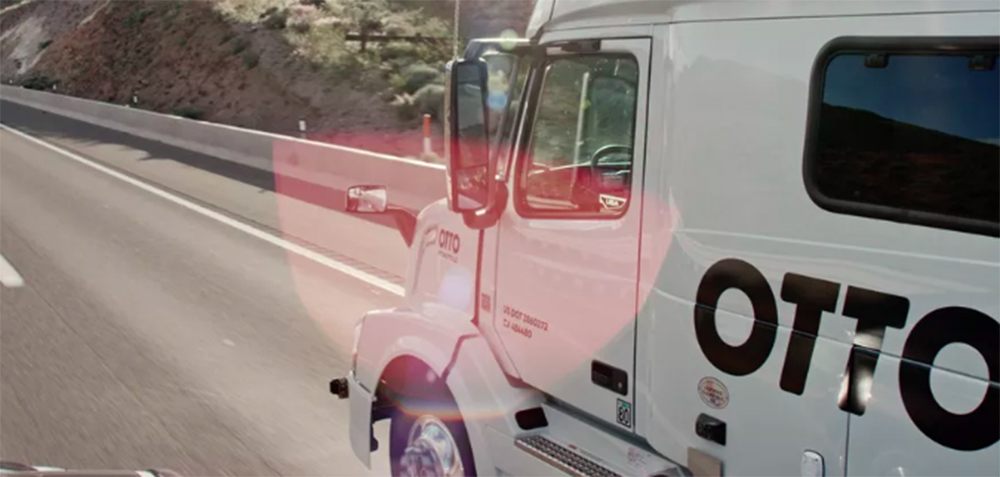Uber Self-Driving Trucks Are Now A Thing of the Past

Uber Self-Driving Trucks
Uber Self-Driving Trucks Division is No Longer
In March of this year we wrote an Expert Insight piece on the rise of Uber Freight and their desire to expand the cutting edge use of autonomous vehicle technology. It was believed that this would drastically disrupt the trucking industry, and was generally seen as a welcome innovation despite startup barriers and public skepticism. As stated in our previous article, the trucking industry is the lifeblood of our US economy, responsible for moving 70% of the country’s freight tonnage. With apps like Uber Freight, the 3.5 million US truck drivers now have an interface to coordinate loads and haulers across the country, but despite its success, it appears that the Uber self-driving trucks division is dead in the water.
Uber Parting Ways With Otto
In 2016, Uber acquired Otto – a self-driving truck startup – to the tune of $600 million. This past week, the Uber Advanced Technologies Group announced that they would not be proceeding with the development of self-driving trucks and freight, and will instead focus on advancing the self-driving car market instead. In an emailed statement, Uber’s head of Advanced Tech, Eric Meyhofer stated that, “We recently took the important step of returning to public roads in Pittsburgh, and as we look to continue that momentum, we believe having our entire team’s energy and expertise focused on this effort is the best path forward.” Uber’s self-driving trucking division was located in San Francisco, with their passenger vehicle division based in Pittsburgh.
The Uber Freight App Remains Intact
Uber Freight, a mobile app launched in May of 2017 that allows truck drivers the ability to connect with shipping companies to coordinate deliveries will remain in place despite the dismantling of Uber’s autonomous trucking division. The app has been well received, allowing a network of approved drivers to connect with available loads, review delivery conditions and receive upfront payment. Now successfully growing through the continental US, Uber Freight is considered a viable opportunity for the organization’s growth and doesn’t seem to be slowing down anytime soon.
One Team, One Clear Objective
Said Uber’s Meyhofer in his emailed statement, “Rather than having two groups working side by side, focused on different vehicle platforms, I want us instead collaborating as one team. I know we’re all super proud of what the Trucks team has accomplished, and we continue to see the incredible promise of self-driving technology applied to moving freight across the country. But we believe delivering on self-driving for passenger applications first, and then bringing it to freight applications down the line, is the best path forward. For now, we need the focus of one team, with one clear objective.”
Ironing Out the Kinks With Self-Driving Vehicles First
Before investing in the Uber self-driving trucks division alongside self driving passenger vehicle technology, Uber is focusing it’s energy and efforts on solidly developing a foundation for the self-driving system in general. Success gained on the passenger vehicle front will then hopefully be rolled over into the trucking industry. LiDAR technology will continue to be developed – light detection and ranging radar that measures the distance between objects and obstacles using laser light. These beams of light bounce off of obstacles and present accurate 3D depictions of the driving environment surrounding the vehicle.
Problems Right From the Start
Despite the iconic image of a self driven truck full of Budweiser proudly and successfully hauling a load of beer across a highway in Colorado, Uber has been swamped with lawsuits right from the beginning. Trade secret skirmishes and patent infringement accusations over LiDAR technology, lawsuits, settlements and the departure of many of their key players created a lot of bad press for Uber self driving trucks. These heavy blows were nothing, however, in comparison to a fatal accident in Tempe, Arizona, where a female pedestrian was struck and killed by an Uber self-driving test vehicle, which essentially stunted autonomous vehicle momentum.
The Slow Reintroduction of Autonomous Vehicle Possibilities
Following the fatal incident, Uber did not renew its self-driving vehicle permit in California, and as a result, they suspended their self-driving car operations for months, only recently reinstating them on the city streets of Pittsburgh. Moving forward, the company will continue the development of modified vehicle models, focusing on enhancing simulation to avoid further accidents. The decision to continue developing the technology by way of an initial manual rollout will allow the company to move in the direction of reinstating their autonomous testing programs on Pittsburgh streets, slowly and steadily.
Contact an SCL Consultant Today
In a wide range of industrial sectors, SCL is committed to being the number one logistics and solutions provider for the products that protect and optimize the machines that keep our country moving. We pride ourselves on remaining at the forefront of industry trends and technological innovations, and as the market continues to evolve, we are committed to providing extensive product and industry knowledge and total performance satisfaction for our customers. For information on how we can assist your fleet in choosing the optimal products at a competitive price, contact an SCL consultant today.
